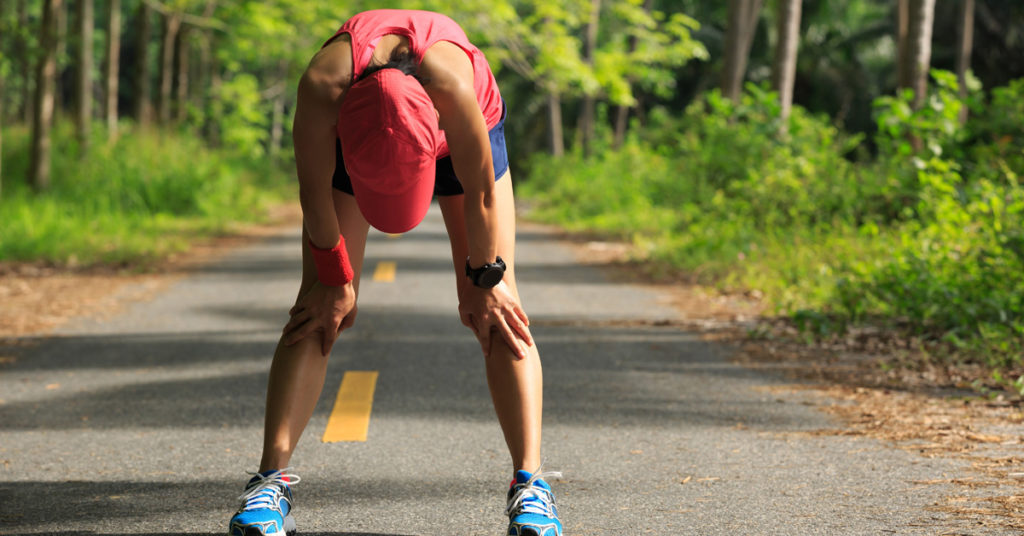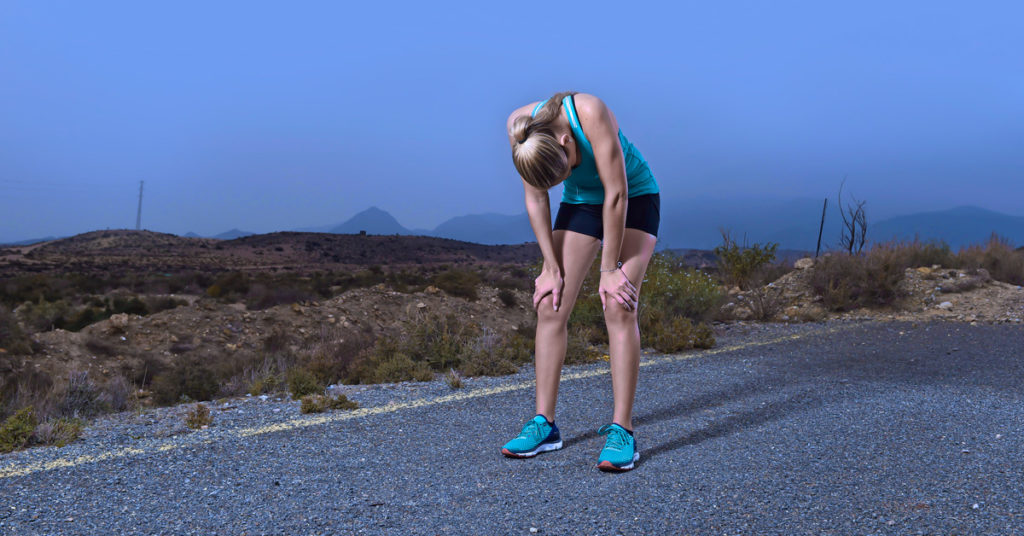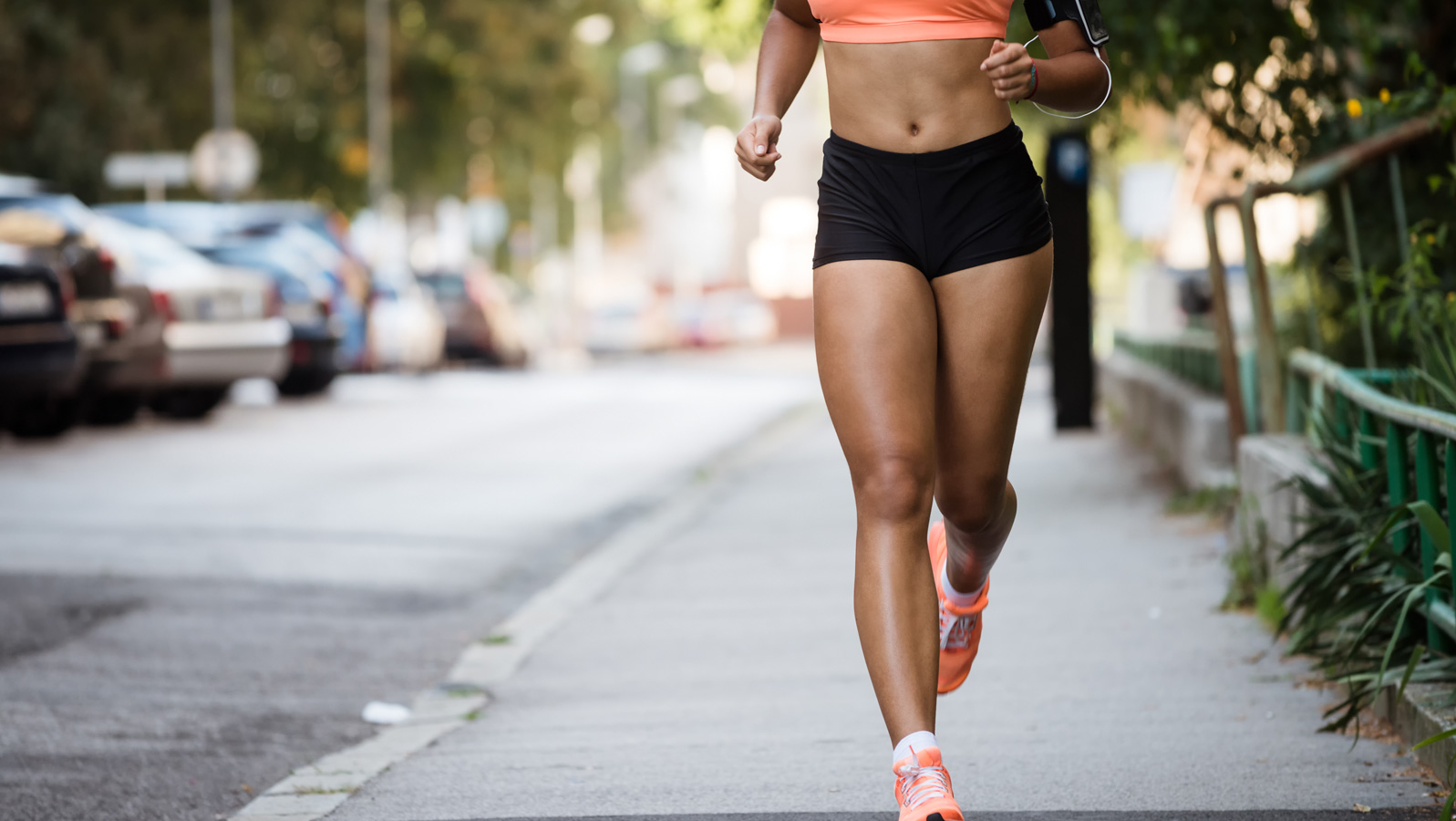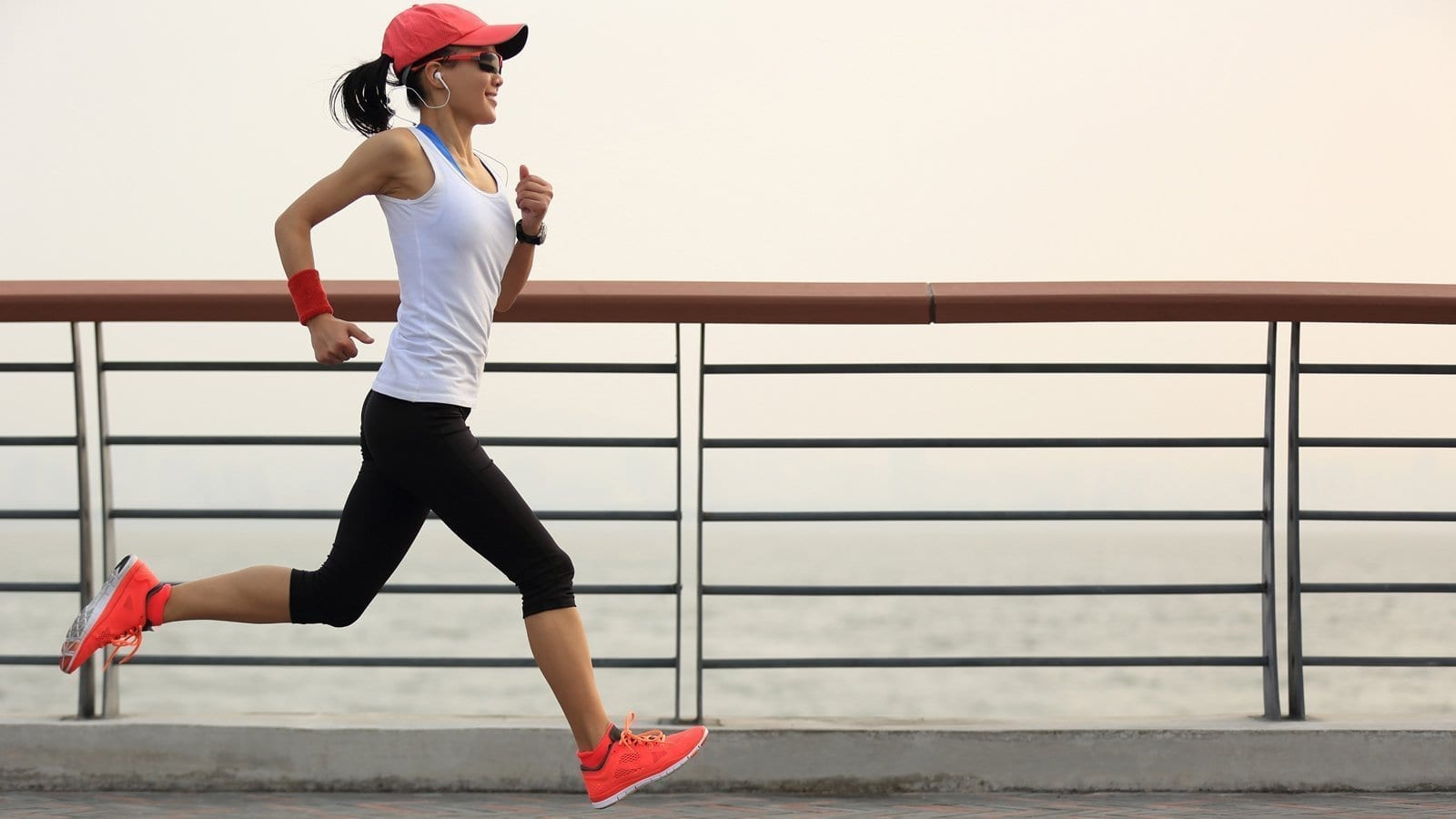Why You Need To Keep Running On Tired Legs
I know this is going to be controversial. There are zillions of blog posts telling you running on tired legs leads to loss of form and injury. It can even lead to chronic fatigue.
But there’s a balance. If you’ve ruled out red flags such as excessive fatigue, poor sleep, a high resting heart rate, or persistent aches and pains, sometimes it’s okay to run through it.
Here are my reasons why it’s okay to keep running on tired legs:
- You want to build endurance.
- You’re building your weekly mileage.
- You want to get fitter.
Becoming a stronger runner is about testing and pushing your limits. When you’re improving as a runner, there will be times when your running legs are tired but you’re not out of breath. You’re running when tired and learning to overcome fatigue.

You Want To Build Endurance
If you’re training for a marathon or any kind of endurance running, at some stage you will need to run on tired legs. You can train to run without getting tired but there will always be a point where you’re trying to keep tired legs moving.
Your body needs to get used to running longer distances. The only way this will happen is when you run beyond your comfort zone.
That doesn’t mean going out and suddenly running 15 miles instead of your normal 5-mile route. It’s still important to be sensible about building your endurance if you want to avoid injury (and we do don’t we).
Add no more than 1-2 miles extra to your longest run each week. Yet sometimes only adding an extra 1-2 miles can still feel hard. Running this extra distance will make your legs feel tired.
You’re Building Your Weekly Mileage
As you work towards your endurance goal, you’ll not only be building the length of your long run, but also your total weekly mileage.
It can be tough going. Even sticking to the “no more than 10% extra” rule each week, can feel like hard work.
This is where you need to make the call. Can I get through my scheduled training, running on tired legs or do I need to add in rest days?
The best training schedules work on a three-week rota. One medium effort week, followed by one hard week, then an easy week where the mileage and effort are less and your body gets a chance to recover.
If you can hang in there, running on tired legs until you hit your easy week, your endurance will benefit. Just watch out for red flags: your tired legs are getting worse or you have persistent aches and pains.
There is a point where you have to say “enough” and take a rest day or two. Getting injured is the guaranteed way of destroying your training plans, so be sensible.

You Want To Get Fitter
Getting fitter means working harder. Working harder means tired legs. There’s no getting away from it.
This time it’s not the length of the runs that’s causing you grief, it’s the pace. Those muscles are being worked – but you’ll recover and come back stronger.
There are training regimes that purposefully make you run hard sessions back to back. You’ll be running on tired legs and that’s okay if you’re an experienced runner.
If you’re a beginner, you need to be realistic. You should approach hard sessions such as tempo runs and intervals with caution.
So many beginner runners get injured in their first year of running. It’s easy to get carried away and overload legs which are still in the early stages of developing strong runner’s muscles.
There’s a good case for avoiding speed sessions in your first year of running. If you’re a beginner go easy on those hard sessions.
Make sure you recover fully in between sessions and you don’t take on more than your body can cope with.
Tired Legs After Running
I forget how often I’ve laid in bed at night after a hard run and been unable to sleep because my legs hurt so much. It’s a classic problem for endurance runners.
Your muscles are sore because you’ve given them a really hard workout! What do you expect if you’re running a mega distance?
It seems less fair when it’s a shorter run. The classic situation is you’re out for your normal run, you’re feeling great and you push the pace.
Afterward, you feel fine, chuffed by your new PB, and pleased your running’s going well. Yet when you wake up the next morning you can barely roll out of bed and struggle to make it down the stairs.
Welcome to your first bout of DOMS.
I’ve known friends resort to walking downstairs backward when the pain of DOMS kicks in.
DOMS is short for delayed-onset muscle soreness. Believed to be caused by microscopic damage to the muscle fibers it can leave you with excruciatingly sore legs.
It can last as long as 3 to 4 days in the most intense cases. The good news is it will clear up on its own with no lasting consequences.
Ice baths and hot soaks can help to ease the soreness but one of the best tips is to force yourself out for a light exercise session. Even a short walk can help.

The Balance Between Leg Fatigue And Running Better
When you’re a new runner it’s difficult to balance getting better at running versus avoiding injury. Always follow a training schedule that’s appropriate for your level of experience.
Don’t launch into speed sessions until you’ve built up a good base and your leg strength can cope.
If you want to train hard it’s best to get a coach. It’s always hard to know where that fine balance lies between training hard and getting injured. If your legs are failing to recover after a rest day, these tips may help:
A coach doesn’t have to be expensive. Often local running clubs are full of dedicated older athletes willing to pass on their experience. You’ll learn a lot from more experienced runners.

Frequently Asked Questions
Why do my legs get so tired when I run?
When you’re running your legs are doing most of the work so it’s not surprising it’s the first part of your body to feel tired. How you respond to tired legs should depend on your training schedule and what you’re trying to achieve.
If you’re building up for a marathon it can make sense to run some sessions on tired legs to build your endurance – just as long as you’re not risking injury. If you’re trying to build speed, running on tired legs is unlikely to be effective. It’s better to have an easy run and save your speed session for when your legs have recovered.
What helps with tired legs from running?
It helps if you build up muscle strength in your legs by running intervals, hill training, and even gym or yoga sessions. Taking an ice bath or a really cold bath shortly after a hard session can help your legs recover faster.
Ice baths improve blood circulation, reduce inflammation, and reduce DOMS (delayed onset muscle soreness). You don’t have to stay in for long, 6-8 minutes is the suggested time… 10 minutes maximum.
How do I stop my legs from getting heavy when I run?
There can be many factors contributing to tired legs when you run. Over-training is the most common cause – cut back on your running, take rest days, and see if your running improves.
Other factors can be lack of leg strength or over-doing strength training, skipping post-run stretches, wearing running shoes with inadequate support, weight gain, insufficient carbs, iron deficiency (affects male as well as female runners), poor sleep, poor circulation, or dehydration. Experiment with changes to your training and lifestyle to see if it makes an impact.





